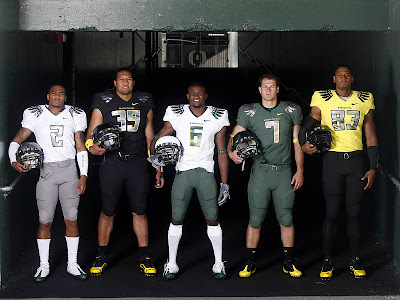1) Last night, the Canadian women's hockey team defeated the U.S. in the gold medal game by a score of 2-0. The win gave the Canadians their third gold medal in the event's history, their lone blemish a silver medal in the inaugural women's Olympic hockey tournament in Nagano in 1998 (that year, the US won the gold).
Canada goalie Shannon Szabados posted the shutout.
But the real story is how the Canadian team celebrated their victory. About a half hour after the fans had exited Canada Hockey Place, the women's team returned to the ice, still in their uniforms and with gold medals draped over their heads, to cavort about with beers, champagne, and cigars in hand.
Later, Szabados helped to break out the Molson, a special edition
super-sized champagne-like bottle of beer from the Canadian brewery.
Poulin, on the left, scored both goals in the gold medal game
but is not of legal Canadian drinking age.
After getting word of this on-ice party, the IOC announced they will now "look into this matter but it is not an investigation....I don't think it's a good promotion of sport values." Despite the IOC's disappointment, this means there shouldn't be any repercussions, especially after Hockey Canada issued a statement that did not condone the behavior:
"The members of Team Canada apologize if their on-ice celebrations, after fans had left the building, have offended anyone. In the excitement of the moment, the celebration left the confines of our dressing room and shouldn't have. The team regrets that its gold medal celebration may have caused the IOC or Canadian Olympic Committee any embarrassment."The only issue of concern seems to be that at least one player on the team, Marie-Phillip Poulin, who scored both goals in the gold medal game, is under British Columbia's legal drinking age. She'll be legally allowed to drink next month, when she turns 19. The Canadian Press seems to be laughing all the way to the medal stand with this one, the National Post has the headline "Canada...celebrate with beer, cigars; IOC gets huffy." The article continued:
"Members of the team...held a tasteful celebration with a bit of beer and some champagne. This being an Olympics on home soil, you think the IOC would cut us a little bit of slack. After all, the City of Vancouver and Canada have rolled out the red carpet for these overpaid Swiss bureaucrats."Let the kerfuffle begin.
A couple of players attempted to drive the Zamboni. No one
noticed the keys weren't in it.
2) Announced this week, the Cleveland Cavaliers will attempt a Guinness World Record during a game on March 5th. The team will pass out just over 20,000 Snuggies in an an attempt to set the world record for "the largest gathering of people wearing fleece blankets." Seriously.
A Guinness World Records adjudicator will be at
Quicken Loans Arena for verification. What a job.
The promotion, presented by KeyBank, has the Cavaliers asking their fans to show up early to the game against the Detroit Pistons on Friday, March 5th to wear the Cavs-themed Snuggies for the first few minutes of the game.
3) In another Olympic-hockey related story, NBC commentator Mike Milbury, expressing his dissatisfaction with the effort of team Russia in their 7-3 defeat to Canada, said that he was "shocked...and disappointed that these guys came with their Eurotrash game." That line comes about one minute into the following clip. Check out Jeremy Roenick's reaction:
While Milbury, who also works for Boston sports network NESN, and other commentators were right to criticize the Russian team, some have said the word Eurotrash "borders on an ethnic insult and it stokes a negative flame of jingoism." Several others (here, here, and here) have suggested that Milbury is attempting to channel some of the popularity of hockey commentator and Canadian national firebrand Don Cherry, who often denigrates European-based players in contrast to Canadian players. He is also famous for wearing ugly suits.
Cherry's suits are almost as loud as his mouth.
Milbury's lame attempt at being controversial has backfired on the Internets, but has not earned him any reprimands from NBC. He will take part in the NBC broadcast of the men's Olympic hockey semifinal games today. The US plays Finland at 3pm, a game that, in a change of course by NBC, will be broadcast live in all time zones. Hosts Canada take on Slovakia at 6.30pm. No word yet on whether Sunday's final will be broadcast live across all time zones, but it seems all-but-guaranteed if the US and Canada advance, right?
Updates from Who Cares?!!? segments in previous weeks:
- Portsmouth FC, the soccer club in England's Premier League, becomes the first top-flight team to file for bankruptcy. Interestingly, what got the team in trouble was overspending on players, a trend that Bill Simmons talks about today on ESPN.com in reference to the NBA.
- Dutch speed skater Sven Kramer, the man who asked an NBC reporter if she was stupid, was disqualified in the 10,000 meter race this week for failing to finish in the proper lane.


















































